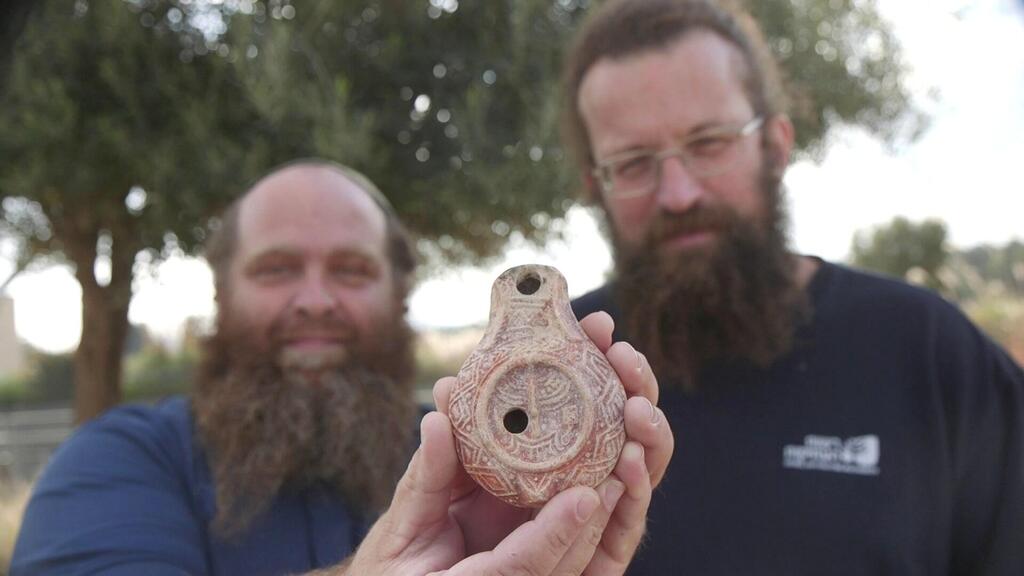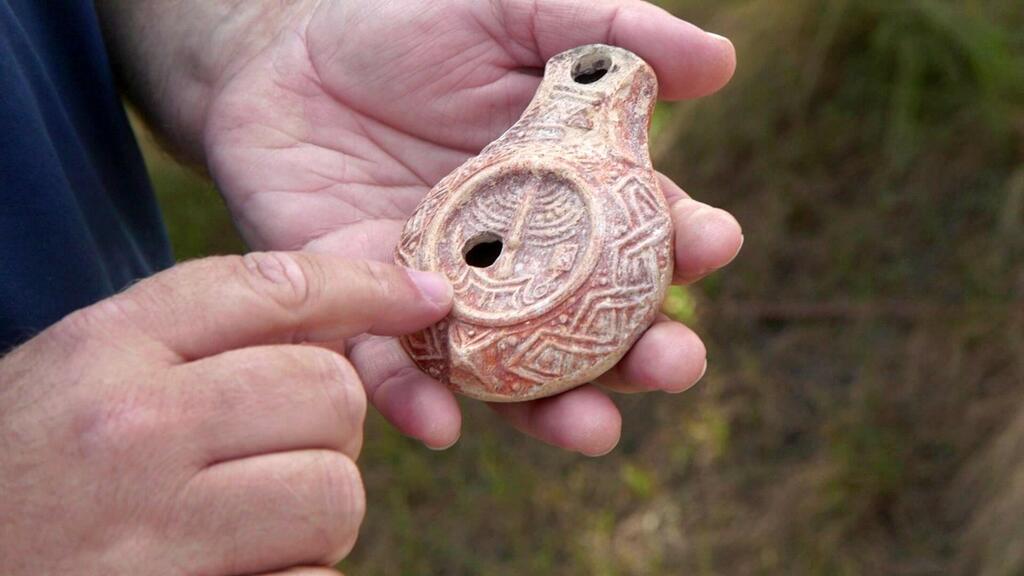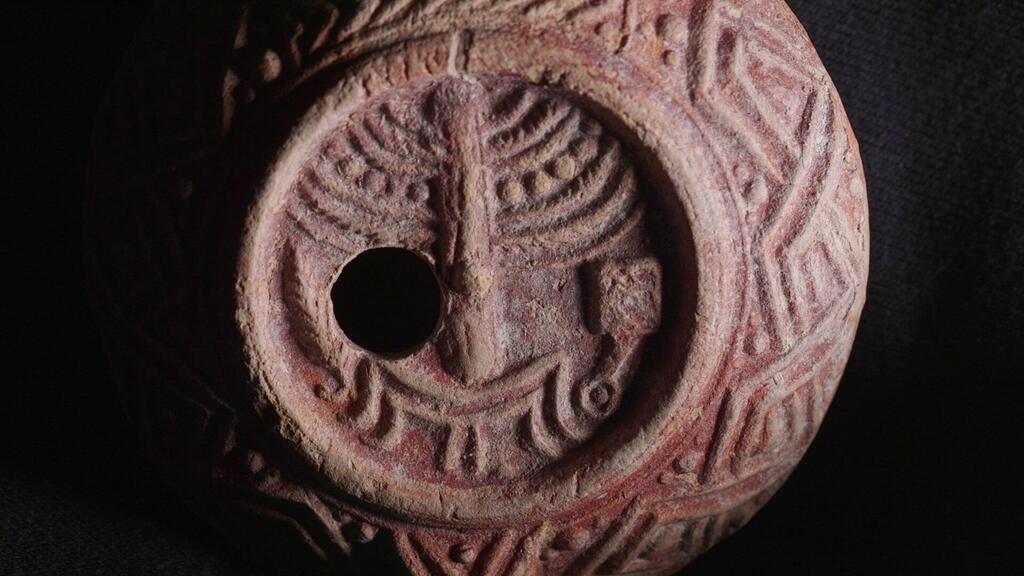A rare ceramic oil lamp from the Late Roman period, decorated with depictions of the Temple menorah, incense shovel and lulav (date palm branch used in Jewish ritual), was recently uncovered during an Israel Antiquities Authority archaeological dig near Jerusalem’s Mount of Olives.
This unique find, which was used for lighting about 1,700 years ago judging by the soot marks on its nozzle, provides a fascinating glimpse into Jewish cultural and religious life during this period.
"The exquisite artistic workmanship of the lamp, which was found complete, makes it an outstanding and extremely rare,” said Michael Chernin, an Israel Antiquities Authority excavation director. “The menorah, incense shovel and lulav are symbols associated with the Jewish connection to the Temple.”
“This finding is particularly surprising since we have very little evidence of the existence of a Jewish settlement in and around Jerusalem from this period. After the Roman emperor Hadrian suppressed the Bar Kochba revolt in 135 CE, Jews were expelled from the city. The Mount of Olives lamp is one of the few material traces of a Jewish presence around Jerusalem in the 3rd-5th centuries CE.”
According to Israel Antiquities Authority research archaeologist Benjamin Storchan, the lamp belongs to the “Beit Nattif” type, named after a production workshop identified in the 1930s near Beit Shemesh. The nozzle and lamp shoulders were decorated with geometric designs and its center features a detailed deception of the seven-branched menorah with a tripod base.
“The choice of symbols on the lamp is not accidental. This is a fascinating testimony connecting everyday objects and faiths among ancient Jerusalem’s inhabitants. It’s likely that the lamp belonged to a Jew who purchased it because of its religious affiliation and memorial to the Temple,” he said.
"It’s evident that the lamp maker dedicated a great deal of time and effort to its decoration," Storchan added. "The lamp was made using delicately and intricately carved limestone molds using drills and chisels. The molds were made in two parts (upper and lower).
“To create the lamp, the potter pressed the clay into the molds, then pressed together. Finally, the vessel was fired and could be used. This method of producing lamps in molds allowed for refined designs as well as the addition of delicate and intricate decorations," he said.
“The Temple menorah became a Jewish symbol in the Second Temple period. However, after the Temple’s destruction, the menorah’s image became an important icon in the Jewish collective memory both within Israel and the Jewish Diaspora,” he explained.
“The menorah occasionally appears on personal objects such as oil lamps, which – being an illumination vessel, perhaps evoked a feeling of lighting the Temple menorah.”
4 View gallery


The oil lamp alongside molds used for producing similar lamps
(Photo: Benjamin Storchan)
Get the Ynetnews app on your smartphone: Google Play: https://bit.ly/4eJ37pE | Apple App Store: https://bit.ly/3ZL7iNv
“This unique oil lamp, which in an exciting manner bears the symbols of the Temple, connects the lights of the past with the Chanukah holiday of today and expresses the deep and long-standing connection of the nation of Israel to its heritage and to the Temple’s memory,” Heritage Minister Rabbi Amichai Eliyahu said.
The rare lamp will be shown to the public for the first time during the Hanukkah holiday alongside stone molds used to make ceramic lamps. This will be done as part of tours held at the Jay and Jeanie Schottenstein National Campus for the Archaeology of Israel.





